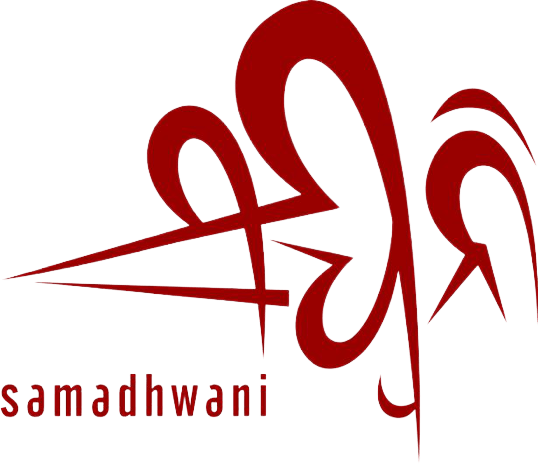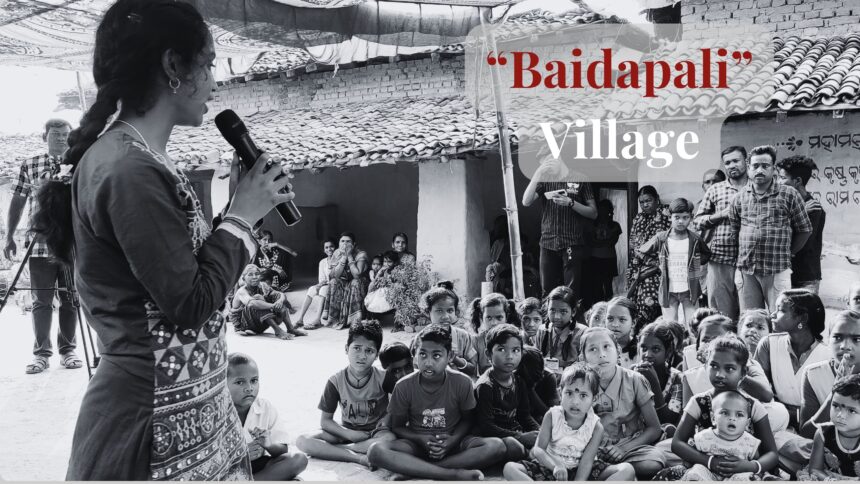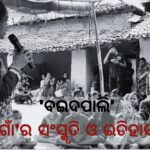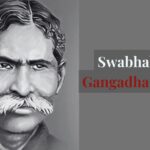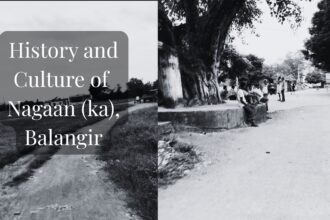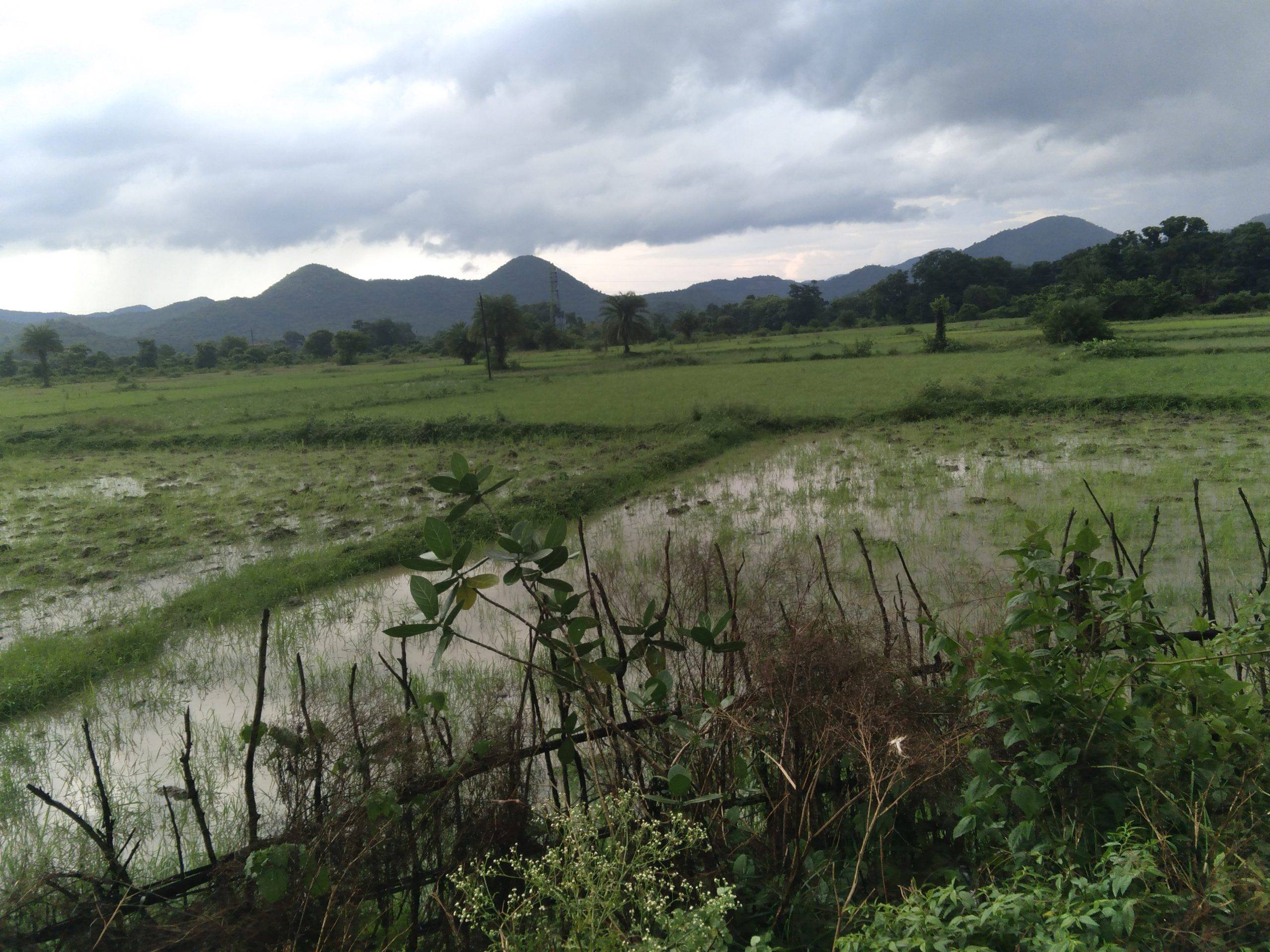Editorial Notes: Himani Pradhan is a student of Yamuna Kandhuni Girls’ High School in Paikmal block. Her village, Baidapali, is located about one kilometre from Paikmal. Her mother’s name is Saranjita Pradhan, and her father’s name is Sanjay Pradhan. In 2023, while studying in Class IX, Himani began documenting the history of her village. Himani, along with four of her friends: Prachi Sahu, Poonam Bhoi, Lakshmipriya Bhoi, and Kamalini Bariha, had completed the writing of the village history and culture in 2024. The people of Baidapali received it with pride and joy. On the occasion of their traditional festival “Baula Amabasya,” the villagers organised a Village History Festival with great enthusiasm, music, and dance. Thanks to Himani’s efforts, today more and more people have come to know about the long-forgotten stories and heritage of Baidapali village. Now in 2025, Himani has just completed her Class X exams and is spending her summer vacation continuing her research. This time, she’s diving deeper into documenting the village’s cultural diversity, natural environment, and biodiversity. She has also reconnected with the Ama Gaan Ama Jiban initiative by Samadhwani and has proudly joined the growing Village Biographers Community, a movement of young students working to preserve Odisha’s local histories. Himani’s dedication, sincerity, and quiet leadership will surely encourage many more students across Odisha to rediscover their roots and record the untold stories of their own villages. – Swayamprava Parhi
- The Story Behind the Naming:
- Location:
- Present Condition:
- Village Mothers:
- Festivals and Foods:
- Chaitra Purnima, A Celebration of the Festival in Our Village:
- Worship, Traditional Foods, and Dress in Our Village:
- Our Daily Food Habits and Traditional Forgotten Foods
- Traditional Recipes as Shared by My Mother
- Healthcare:
- The Healer of Our Village (Baidya):
- Laivelyhood :
- Animal Grazing:
- Market:
- Environment and Transformation:
- Main Problems in Our Village:
- Closing Thoughts:
The Story Behind the Naming:
Our village is called Baidapali. I had asked some elders from our village – Gountia Telachandra Bhoi, Digree Lal Bhoi, Rusabh Sahu, Ghanashyam Sahu, and Hadu Sahu– about the origin of this name. They shared a fascinating story passed down through generations.
Long ago, the king of Padmapur had a severe fever that would not go away. To seek relief, the king came on a pilgrimage to the Sri Sri Nrusinghanath Temple in Paikmal. During his stay, arrangements were made for his meals at the house of the local Gountia (village head). Two brothers from the Bhoi community, known for their traditional healing, were living at that time in the Gountia’s premises. The king dined at the Gountia’s house and told him about his persistent fever. Upon hearing this, the Gountia said, “Come, come! There are two brothers staying with us. I’ve heard they prepare herbal medicines. They might be able to cure your fever.” The king agreed and accompanied the Gountia to meet the brothers. The two Baidya (healer) brothers, upon learning about the king’s illness, gave him a three-day dose of herbal medicine. The king then returned to his hometown and took the medicine as prescribed. To his great relief, the fever completely disappeared. In gratitude, the king told the Gountia, “Keep these two brothers near your village.” The Gountia granted them a small piece of land in a nearby area. Since then, the land has been known as Baidapali. ‘Baidya’ meaning healer and ‘pali’ referring to a settlement or village.
This is the true story behind the naming of our village. It not only reflects our historical connection with traditional medicine but also teaches us about the natural environment and biodiversity of the area. The herbs used by the two Baidya brothers came from the Gandhamardan Hills, renowned for their rich diversity of medicinal plants. Even today, many rare herbs still grow there, though their numbers are gradually declining due to climate change and human intervention, including deforestation.
Because the name of our village is tied so closely to this legacy of healing, natural wisdom, and biodiversity, I feel a deep sense of pride in calling it Baidapali.
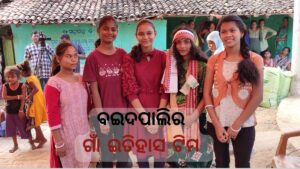
Location:
Our village, Baidapali, is located just 1 km from Paikmal, on the road to Jharbandh. Many communities live in our village, such as Kulta, Gaud, Brahmin, Binjal, Teli, Marwari, Harijan, Kandha, and Sahera.
In our village, we have a Kirtan group (devotional music group), and the Harijan community has its own Gana Baja (traditional folk instrument group). We also have a Kalyan Mandap (community hall), Namayagna Mandali, a water tank, a petrol pump, a small bank, an ice cream factory, cloth and shoe shops, Anganwadi centre, Panchayat office, high school, primary school, Shiva temple, three ponds, a spring, Khuta-Buta, Ghudadhunguri dam, and a local Vaidya (healer).
Our village was established in 1902. The first people to settle here were two brothers from the Bhoi family – their names were Ishwar and Banamali. Later, the Pradhan family came from Jamla and started building more houses and farming.
The name Baidapali became well-known in nearby areas because the Vaidyas (healers) here used to give natural medicine to sick people and cure them. They had knowledge of many types of diseases and herbal treatments.
In the past, our village did not have many facilities. People had to go to the spring to collect water. There were no proper roads or transportation. Most houses were made of mud and had thatch roofs. Around the village, there was dense forest, but now many of those trees are gone, and people have built houses there.
There was not much food available in the old days. People ate wild foods like Kudo, Gunji, and fried Mahul flowers. Even though the food was simple, people were healthy and strong and lived a long life.
Long ago, there were many Saguan (teak) trees around our village.
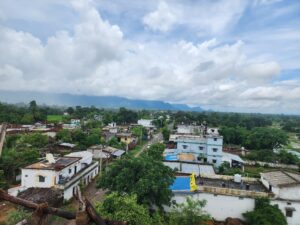
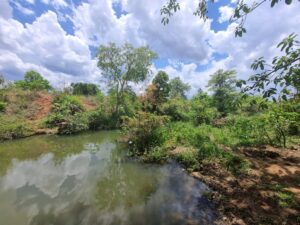
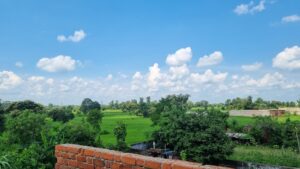
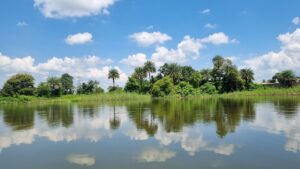
Present Condition:
Baidapali is a vibrant village nestled in the Paikmal block of Bargarh district, Odisha. Rich in natural beauty and cultural heritage, the village lies near the sacred Gandhamardan Hills and is known for its agricultural traditions, biodiversity, and strong community ties. Now, the population of our village Baidapali, is around 1,200. There are about 207 houses in the village. Out of these, 100 are mud houses with thatched roofs, and 107 are cement houses. Many people in our village do different kinds of skilled work. Some are carpenters, some make brooms, and some are masons who build houses. These people are known for their craft work and hard labour.
In the past, people from our village also took part in the famous “Balco Hatao Andolan” (Remove BALCO Movement). When the BALCO company tried to break the Gandhamardan Mountain near Nrusinghanath, the people of Baidapali were among the first to protest and join the movement. They came forward to protect nature and the sacred mountain.
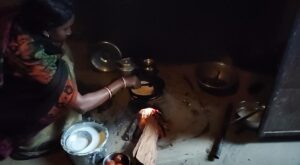
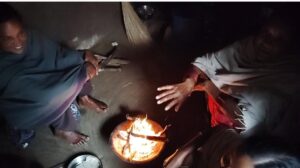
Village Mothers:
I met some of the elder women in our village and asked them about the past of Baidapali. Their names are Madhabi Pradhan, Bilasini Bhoi, Khirabati Nayak, and Ambika Sahu. Our mothers told me that when they came to this village after marriage, the situation was very different. There were no basic facilities at that time. There were no proper roads or transport. People had to walk on muddy roads and carry water from faraway places. Now, they say, many changes have come. Almost every house has a hand pump now. They are happy to see the progress. When they came here after marriage, most women stayed inside the house, but now women go out and work in different places. There was no electricity in those days, but now electricity is available in the village. Earlier, there were no toilets and no schools in the village. Girls wore scarves over their heads, but now many wear dresses. The price of sarees, dresses, and dhotis was just ₹20, but now it has increased to hundreds of rupees. In earlier days, people used to exchange food grains. For example, they would give one basket of paddy and get one basket of moong (green gram). That was how they managed their food needs. They also said that many food items that were available earlier are now disappearing.
Festivals and Foods:
In our village, we celebrate many festivals like Nabarnna, Bali Pratha, Ganesh Puja, Bhai Jiuntia, Shivaratri, Khudurukuni, Anla Navami, Janmashtami, Pushpuni, Naam Yajna, Chaitra Purnima, Gorapacharu, and many others.
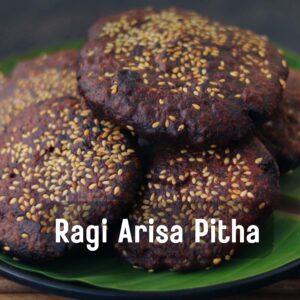
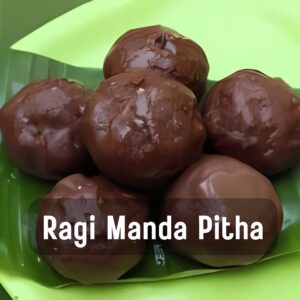
During these festivals, many types of traditional food are prepared in every house. Some of the popular items are Arisa Pitha, Manda Pitha, Ragi Jau, and different types of fried snacks and curries. These foods make our festivals more special and joyful.
Chaitra Purnima, A Celebration of the Festival in Our Village:
In our village, Chaitra Purnima is a very important festival. On this day, we worship our village goddess, and this tradition has been followed since the time our village was established. Every year, we do this puja, but once in every three years, a special animal offering is made, like a goat or chicken. People collect food and puja items and go to the goddess temple for night worship.
There is a strong belief among villagers that if this puja is not performed properly, the village goddess becomes unhappy and something bad may happen in the village. That is why the puja is always done seriously. During this time, people from the Harijan community come playing their traditional drums and go to the Gountia (village head), then everyone together goes to the village deity. The Gountias of Paikmal and our village together do the rituals. The Ganda Baja music is played during this time. People also prepare Manda Pitha and offer coconuts and special sweets. No songs are sung during this ritual.
I feel very happy during festivals in my village because we get to eat special food, wear new clothes, and meet our relatives who come home. Every year, we also have a Naam Yajna, where people from nearby villages come to watch. I enjoy it very much. But this is a new addition to our village cultural festival.
On festival days, I wake up early, take a bath, get ready, and go to my friends’ houses. Together we visit the celebration place. My mother always buys me new dresses these days. We sing, dance, and have so much fun. I wish our village had more cultural programs. In the past, there used to be Danda dance and folk plays, which were primarily observed by the Dalit community and the tribal community of our village, but now they have stopped. If we bring back these events, it would help us stay united and preserve our community by sharing and village culture. Programs like Danda dance, drama, and Pala should be organized for the cultural integration of our village.
Worship, Traditional Foods, and Dress in Our Village:
In our village, there is a village goddess shrine and a Shiva temple. The traditional customs that were practiced earlier are still followed today, like Nabarnna (the new harvest festival) and the Odhani tradition. Apart from the main temples, villagers also worship small stone idols inside the village as symbols of deities. We celebrate many festivals such as Phuspuni, Nuakhai, and Ganesh Puja. During these festivals, cultural programs are held in our village. There is also a Nam Sankirtan group that performs devotional songs.
During major festivals and processions, women wear Sambalpuri sarees, and men wear new dhotis. During these times, traditional foods like Arisa Pitha and Kakara Pitha are prepared, especially on Naam Yajna and on Anla Navami. On the day of Naam Yajna, people cook a variety of items like rice, dal, curry, sour dishes, kheer, sweets, and more. Whenever a festival is held, everyone in the village gathers together and cooks many types of food. On Pousha Purnima (full moon day in Pausha month), people make Manda Pitha, Arisa, Kakara, Rasabara, Malpua, Kheer, Puri, Fish and Mutton curries, Rasiladu, and Peanut Ladu, etc.
Earlier, many kinds of traditional foods were prepared in the village during festivals, like Manda Pitha, Arisa, Kakara, and many other millet-based foods. But now, some of these are not made anymore. In the past, villagers also made kheer with mandia (ragi), which is now forgotten. They used to prepare steamed manda, flattened rice vada, Kuna Chura, Sarasatia, and many other local foods. Some villagers are still searching for these old recipes because they want to bring them back.
Our Daily Food Habits and Traditional Forgotten Foods
Nowadays, our daily food at home includes:
- In the morning, we eat tea, Maggi noodles, suji (semolina), upma, roti, poha, or leftover rice with water (basi pakhala).
- In the afternoon, we eat rice, dal, fried vegetables, or pakhala (fermented rice).
- In the evening, we have biscuits, tea, chowmein, or snacks like bara-ghuguni.
- At night, we usually eat rice, dal, fried items, roti, or pakhala again.
Our grandparents, father, mother, grandma, grandpa, during their childhood, used to eat foods like Kudo (Millet), Gunji (Wild Grains), Mandia (Ragi or Finger Millet), and Raksi (Millet). In the past, people consumed many types of wild and forest foods, which are now forgotten. Foods like fried Mahua flowers, Kendu fruits, Kusum seeds, Kuralu leaves, Harada, Kudo, Ragi, Gunji (Little Millet), and Sunsunia saag (a type of leafy green) were once common, but today, people hardly remember them or eat them.
Traditional Recipes as Shared by My Mother
How Mandia Tikiri (Ragi Porridge) is Prepared:
First, the Ragi (Mandia) is ground into a paste. Then, a fire is lit, and one liter of water is boiled in a deep pan. Once the water is hot, the ground ragi is added and stirred well. About 250 grams of sugar is then mixed into the pan, and the lid is covered. This mixture is allowed to boil for about one hour. After boiling, the mixture is stirred again for 10 minutes to make it smooth. Then the cooked ragi porridge is poured into a plate or bowl and allowed to cool. After cooling, it is ready to be eaten. This is a healthy and traditional sweet dish that our mothers and grandmothers still know how to make. Nowadays, many women still know how to prepare some traditional dishes. For example: Arisa Pitha
Arisa Pitha (Sweet Rice Cake) Preparation:
First, raw rice (arua chaula) is soaked in water for 2 to 4 hours. Then the soaked rice is drained and ground into fine powder using a traditional wooden grinder (Dhenki). Next, water and jaggery or sugar are added to a pan and heated. Once the syrup is ready, the rice flour is mixed into it and made into a soft dough. Then, using hands, the dough is shaped into round, flat discs, which are deep-fried in hot oil. This makes delicious Arisa Pitha, a beloved sweet in our village, especially during festivals. We can add Ragi for more nutrition.
Healthcare:
In our village, people often suffer from illnesses like cold, cough, fever, tuberculosis, and heart problems. When someone falls sick, they visit the doctor or local clinic for treatment. Diseases like cholera, typhoid, hepatitis, and waterborne infections like “kachu kundia” are also found here. Some villagers also suffer from chronic diseases such as cancer and anemia. Vitamin deficiency diseases like night blindness, blurred vision, rickets, beriberi, tongue ulcers, and general malnourishment are also seen. There is no primary health center in our village, but the nearest one is about 1 kilometer away. Nearly 90% of the people in our village go to the health center when they are unwell. For childbirth, all women go to hospitals or health centers for safe delivery. Our village has been open defecation-free for the last fifteen years. In the past, diseases like cholera, smallpox, malaria, typhoid, diarrhea, and epidemics were very common, but now these are rarely seen. This is because our village remains clean and well-maintained. Women play an important role in keeping the village clean. Members of various Self-Help Groups (SHGs) gather once a month to clean the village. If anyone leaves their surroundings dirty, they are fined by the village committee. People also keep their own homes clean. During the rainy season, villagers use mosquito nets to protect themselves. They also clean the corners of their homes and ensure that water does not stagnate. Mosquito repellent sprays and DDT spraying are done in homes and village lanes. Children are given polio drops, and people aged 5, 10, 15, and 20 years are given TT (Tetanus Toxoid) vaccines. During the COVID-19 pandemic, vaccines were administered to all eligible people. Medicines for filaria are also given. Recently, villagers have also faced new diseases like corona, filaria, and eye flu (conjunctivitis).
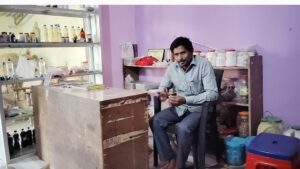
The Healer of Our Village (Baidya):
I met the traditional healer (Vaidya) of our village. His name is Parameswar Pradhan. He told me that earlier, our village healers used to treat diseases like Sautha (gout), Pathuri (kidney stones), Pandu (anemia), Kamala (jaundice), Pakshaghat (paralysis), and all types of fevers. They collect their medicines from the forest near our village. Even now, they do the same.
Near our village, there is the famous Nrusimhanath temple. It is located on the Gandhamardan mountain. The forest around that place has many medicinal plants and roots. Our village healer goes there and collects herbs. In the world, there are around 4,200 types of medicinal plants, as written in the year 2016. Out of them, about 2,700 types are found on the Gandhamardan hills. Even now, people take Ark treatment from him for memory loss, constipation, typhoid, kidney failure, uric acid/gout, weakness, and mental diseases.
The diseases are almost the same as before. Only the names have changed. For example, Bastipat is now called kidney failure, and Sannipat Jwara is now called typhoid. In our village, people used to suffer from TB, asthma, jaundice (even sickle cell type), 84 types of gout, Kamala fever, Pathuri, Pandu, and others. Many such diseases are still found today. Even now, people come to our healer for treatment. From around 20 to 25 districts of Odisha and 5 to 7 districts of Chhattisgarh, people visit him regularly. They believe in his treatment.
Laivelyhood :
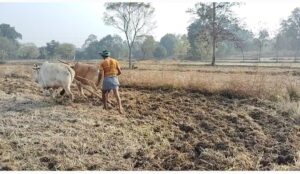
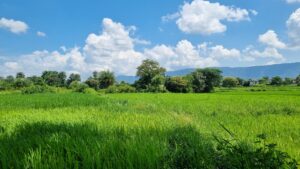
To know more about farming in our village, I talked to some farmers: Rusab Sahu, Ghanshyam Sahu, Krishna Sahu, Netrananda Bhoi, Lalit Pradhan, and Dhanurjaya Bhoi. They told me that in our village, people grow groundnuts, paddy, mandia (ragi), green gram (mung), black gram (biri), kulthi (horse gram), kodo, and cotton. Among all these, paddy, mung, biri, and groundnut are grown the most. Our village has 205 acres of land. Out of that, 90% is suitable for farming and 10% is not suitable. Around 80% of the people in our village depend on farming. Besides farming, people also do other work, like small businesses, carpentry, and masonry, to earn a living. After harvesting, villagers store the seeds in jute bags and keep them safely in a storage house where rain cannot damage them. There is an irrigation facility in our village. People depend on both rainwater and canal water for their farming. About 90% of the farmers get help from irrigation. In our village, both modern and traditional farming methods are used. Crops like paddy, mung, biri, mustard, and groundnuts are grown. People do farming twice a year. In the Rabi season, they grow mung, biri, groundnut, and paddy. In the Kharif season, mainly paddy is grown.
Nowadays, people are also growing nutri-crops. Mandia/ Ragi and Kodo are two such crops still grown in our village. Earlier, people also used to grow Bajra (pearl millet), but now it is not grown anymore. Even now, 90% of villagers eat nutrient-rich food. They grow their own crops and eat healthy food. Only very few people from our village, maybe two or three, have gone to other states for work because they couldn’t find jobs here. Some of them are working in brick kilns. Because of this, farming sometimes gets affected due to a lack of labour.
Animal Grazing:
In our village, there is grazing land for domestic animals. Earlier, there was more open land for grazing. But now, much of that land has become farmland or has been used for houses and roads. So now there is very little grazing land left. Because of this, the animals do not get enough grass to eat. The number of cows and bulls has also decreased in our village.
Market:
In our Panchayat, there is a weekly market. It happens every Tuesday. From our village, people take things like green gram (mung), black gram (biri), ragi (mandia), groundnut, chicken, fish, eggs, and vegetables to sell in the market. Our villagers also buy things from the market like clothes, oil, utensils, spices, pulses, leafy greens, sugarcane, and daily-use items. There are small traders in our village. Around ten percent of the villagers earn their living by doing business in the weekly market. They sell sugarcane, groundnut, clothes, spices, and vegetables. People from outside also come to our market. They buy jungle products like danta kathi (toothstick), leaf-made plates, seeds, bamboo baskets, and kola (jungle fruits). Some of them also sell clothes, different types of grains, and Sambalpuri sarees. Sometimes they buy fresh vegetables and forest items from our village like kankada (spiny gourd), makhan (Pumpkin), leafy greens like Sunasunia and Kanjera, which are now not easily found in other places. These traders pay fair prices and behave very nicely with our villagers. Because of this, small village vendors are happy. They are earning well and are able to take care of their families properly.
Environment and Transformation:
In the past, our village was surrounded by greenery, fields, trees, streams, hills, and forests. We used to clearly feel the changes in all six seasons: summer, monsoon, autumn, pre-winter, winter, and spring. But now, we mostly experience only summer, monsoon, and winter. Earlier, people in our village used to keep many domestic animals like bullocks, cows, goats, sheep, hens, ducks, and parrots. Even now, cows, goats, hens, and ducks are still raised. Near our village, there are forests known as Chaka Jungle and Baraputa Jungle. People go there to collect medicinal roots like cheramuli, forest herbs, wild fruits, and firewood. You can still find trees like Mahua, Bael, Jamun, Bamboo, Mango, Harida (myrobalan), and Tamarind in our village. However, rare trees like Mahaling and Rengal (sal trees) have now disappeared.
In earlier times, our village experienced natural disasters like droughts and cyclones. Our grandparents say that during their childhood, the village environment was very different. There were small thatched houses, huge trees close to homes, and dense forests nearby. There was only a primary school. For higher studies, children had to walk 5 to 10 km to nearby towns, even through muddy roads in the rainy season. There was no electricity or a health center back then. Today, those small thatched houses have been replaced by pucca (concrete) houses, and large trees have disappeared. Even the forests are being cut down. But there is now electricity, schools up to higher grades, and a primary health center. Honestly, the village we see now is completely different from what our grandparents lived in. There’s even solar power today!
Main Problems in Our Village:
The biggest issue we face in our village now is the illegal liquor shop located near our school. Because of this, many lives are being ruined, and the environment feels unsafe. Girls feel uncomfortable while going to school. Our village primary school has no proper classrooms. Children sit on the floor and often get wet during rains. The village roads have become worse, leading to accidents. There is also a serious drinking water problem these days. We have no government health centre in the village.
Closing Thoughts:
After listening to the elders and writing so much about my village, I feel extremely happy and proud. Not just me, many villagers didn’t know much about our past, our culture, or how we used to celebrate festivals. Writing this village history has brought me closer to all of them. I sat with the elders, asked questions, listened to stories, and I feel how joyful that experience was! These days, many children are only busy with their mobile phones. But will they ever know the joy of discovering their village’s roots like I did?
Through this work, I feel like I’ve helped rebuild an emotional bond among the people of our village. I am proud that I could reconnect everyone with our roots. I promise to always protect our environment.
In 2024, during the Baula Amabasya celebration, we celebrated a Village History Festival with great enthusiasm.
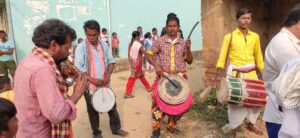
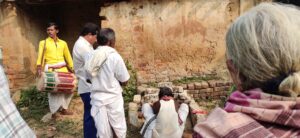
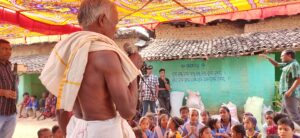 I truly believe that I can do something for my village. I will never stop researching and writing about my village’s history, because my village is my life. I will work for its progress. Whenever there is any problem, I’ll do my best to help. I’ll be with our people in their joys and sorrows.
I truly believe that I can do something for my village. I will never stop researching and writing about my village’s history, because my village is my life. I will work for its progress. Whenever there is any problem, I’ll do my best to help. I’ll be with our people in their joys and sorrows.
I want to say something to all students; first, try to know your own village, its past, its traditions, its festivals, and the kind of food people used to eat. Talk to elders and write these things down. When we know where we come from, we can think better about where we want to go. That’s how we can build a better future for ourselves, our village, and our country.
This story of Himani Pradhan was originally written in Odia and published in Samadhwani. We have translated it to make it accessible to a wider audience.
The original story link is given here: https://samadhwani.com/8973
